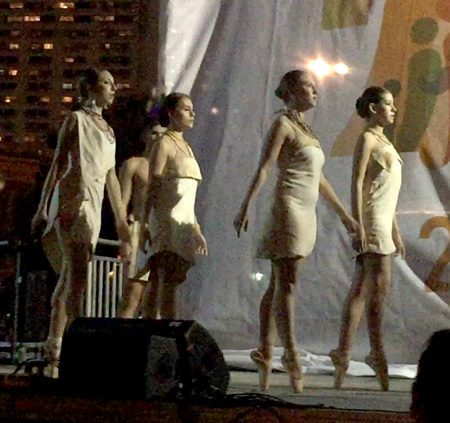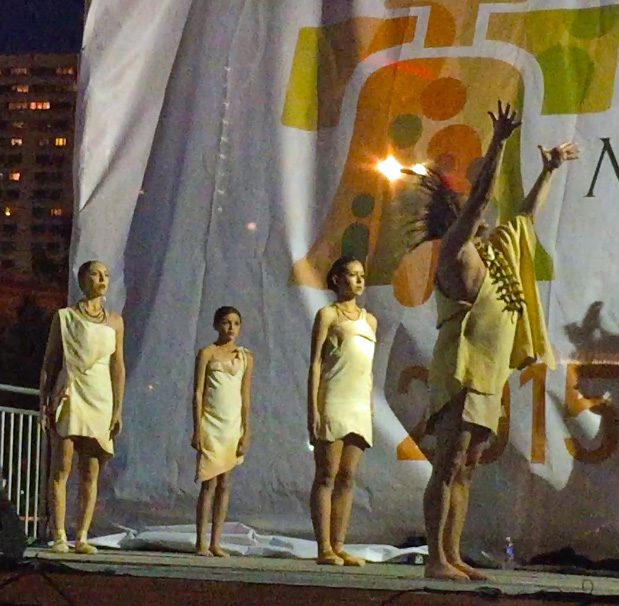[dropcap]Wahzhazhe[/dropcap], is a contemporary ballet that brings together the unique and diverse qualities of Oklahoma history and the culture of the Wahzhazhe people, now called Osage, says Randy Tinker Smith, Osage Ballet director.
“We produced this ballet as a way of telling our story with the vision of taking a video of it to children in other tribes around the country,” says Smith. “Our hope was that it would help inspire them to rise up to their artistic endeavors.”
The Osage are a Midwestern American Indian Siouan-speaking tribe who originated in the Ohio River Valley of present-day Kentucky, but in the 19th century they were forced to move from their homeland to land that is now in Oklahoma.
The ballet was inspired by all the Osage endured during that time.
“I heard some music by Lou Brock called ‘The Journey’ that tells the story of our people’s move from our original lands in Missouri, Arkansas and Kansas,” says Smith. “I thought that it would be a great ballet.”
More than 50 Osage elders granted permission to go forward. Smith says it took about a year to write the ballet storyline.

“During that timeframe, we also had to raise money, make drops and costumes, and Dr. Joseph Rivers from [The University of Tulsa’s] film department was brought in to write additional music and arrange all of the music. I coordinated all of the above,” says Smith.
It was also during this time that Smith’s daughter, Jenna, became interested in the project.
“Jenna listened to me talk about the storyline for a year,” says Smith. Jenna, a ballerina herself, had previously attended the North Carolina School of the Arts.
“So it was natural that she began picturing the choreography,” says Smith.
The original plan was for Roman Jasinski, director of Tulsa’s Jasinski Academy and son of Tulsa Ballet’s founders, Roman Jasinski and Moscelyn Larkin, to choreograph the ballet.
“In hindsight we saw that it had to be choreographed by an Osage to really make an impact,” says Smith. “Roman helped advise us throughout the whole production.”
The ballet premiered in 2012 in Tulsa and Bartlesville, and ever since has been well received throughout Oklahoma and the U.S. The group performed in October for Pope Francis during his U.S. tour at the Festival of Families in Philadelphia, and at the Smithsonian’s National Museum of the American Indian in Washington, D.C.
To date, Wahzhazhe is the only ballet the group has performed. It is a large performance that includes a cast and crew of more than 50 people.
“We will perform at the Lensic Theater in Santa Fe in August 2016, and thereafter, we hope to perform in Santa Fe yearly,” says Smith. “We have kept most of the same cast, but for Santa Fe we will be holding auditions in January 2016.”
 The ballet provides an opportunity for young people to become involved in the creation of an artistic performance that honors a people’s history and cultural traditions.
The ballet provides an opportunity for young people to become involved in the creation of an artistic performance that honors a people’s history and cultural traditions.
“It is a story that has a great amount of joy along with sorrow,” says Smith.
When the Osage Ballet first performed the piece she said she did not know what to expect.
“People who admittedly do not like ballet said they were pulled into the story and enjoyed it,” says Smith. “Non-native people were so happy to learn about our history. Natives from many different tribes wept as they recognized things that their tribes had gone through.”
Smith says the favorite scene for most people is, “We Walk in Two Worlds.” This last act in the ballet shows a surviving people who have learned to walk in two worlds; they continue to hang onto the threads of their culture while their daily lives force them into a society that is not their own. Prominently featured on stage is an Osage man with a long braid, dressed in a suit and tie, carrying a briefcase.
“Suddenly he hears the drum and begins Indian dancing across the stage,” says Smith. “The sun sets. The Osage way will continue. It is something that I don’t think most people understand. We live in a European society, but we are still Osage and have a different culture and traditions. I see it as a different cadence. Then we get thrown into the society around us that moves so fast. It is a challenge to straddle both worlds.”























